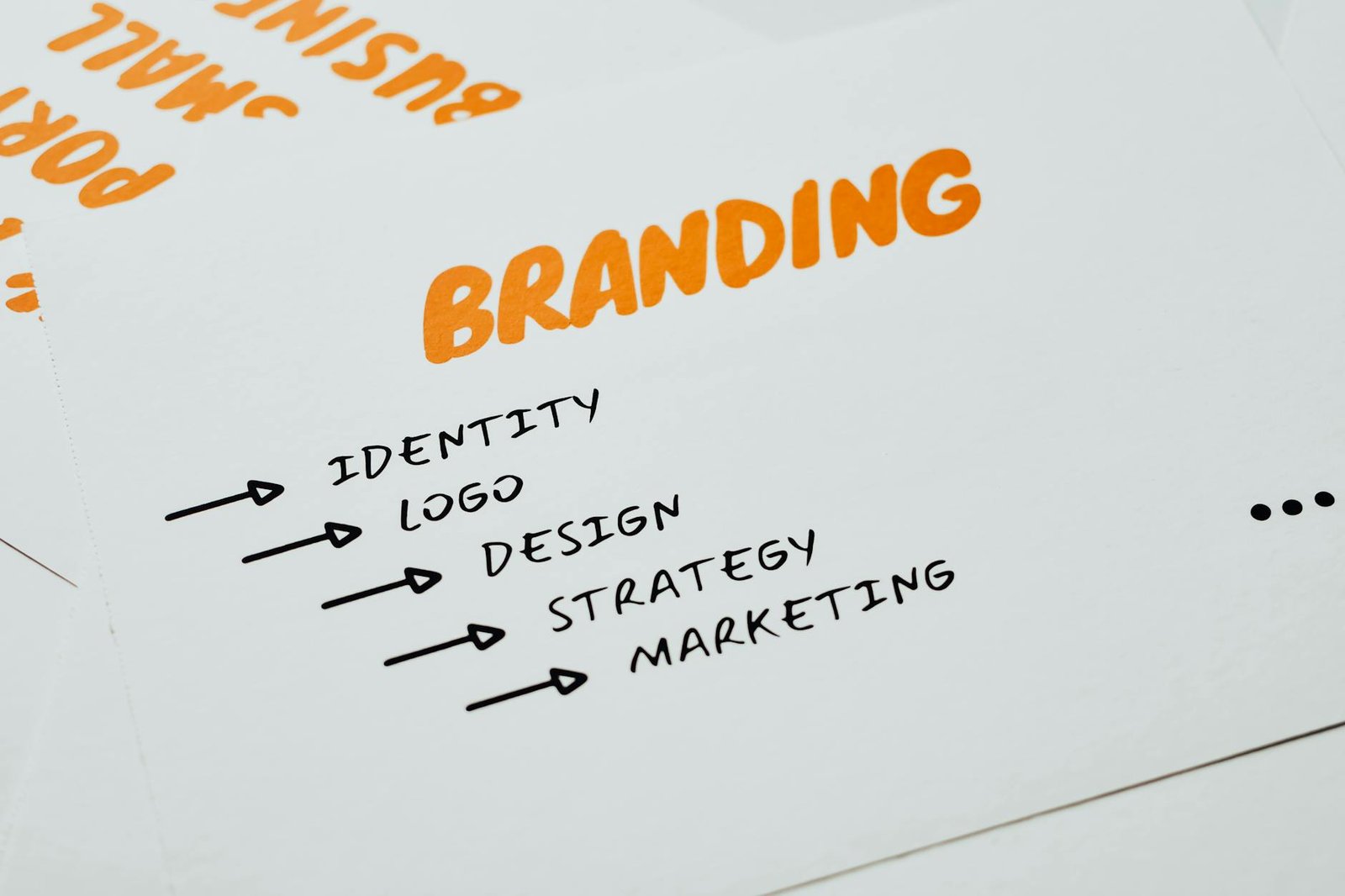Effective Marketing Campaign Strategies
Importance of Market Segmentation
Market segmentation is a crucial aspect of successful marketing campaign targeting strategies. According to a study by Bain & Company, 81% of executives believe that segmentation is vital for increasing profits. Companies that implement effective market segmentation strategies have experienced a 10% higher profit compared to those without such strategies over a five-year period. By dividing your target market into specific segments, you can optimize your marketing efforts, leading to more personalized communication and better alignment with consumer needs.
Strategies for Demographic Segmentation
Demographic segmentation is one of the simplest and most widely utilized methods of market segmentation. This strategy involves categorizing your audience based on observable characteristics such as age, gender, lifestyle, education, household income, and marital status (Qualtrics). By understanding these demographic variables, you can tailor your marketing campaigns to more effectively resonate with each segment.
| Demographic Variable | Insights Gained |
|---|---|
| Age | Tailor messages for different age groups |
| Gender | Address specific preferences and issues |
| Income Level | Offer products that align with purchasing power |
| Education Level | Create content suitable for education backgrounds |
| Occupation | Target messaging based on consumer profession |
Key demographic variables include age, gender, occupation, income level, ethnicity, religion, and family structure. Each of these factors can provide actionable insights into customer preferences, values, and behaviors that inform your overall marketing strategy (The CMO).
For example, Salesforce effectively targets sales representatives through strategic demographic targeting by focusing on their occupation. They engage this audience with relatable visuals and messaging tailored to their needs (The CMO).
Implementing demographic segmentation not only enhances your campaign’s effectiveness but also contributes significantly to achieving your overall business objectives. You can explore more assorted examples and successful tactics by referring to our collection of marketing campaigns examples.
Utilizing Geographic Segmentation
Geographic segmentation is a vital strategy in marketing campaign targeting, as it creates distinct customer groups based on geographical boundaries. This methodology aids in determining where to sell, advertise, and expand businesses.
Impact of Geographic Boundaries
Geographic segmentation encompasses several key factors, such as physical location, climate, culture, population density, and language. Understanding these elements is crucial for effectively reaching audiences located in diverse regions. For instance, the weather and climate in various parts of the world can significantly influence consumer behaviors, product offerings, and messaging strategies Experian.
| Geographic Aspect | Influence on Marketing Strategy |
|---|---|
| Physical Location | Determines market entry and logistics |
| Climate | Affects product choices and promotional strategies |
| Culture | Shapes messaging and customer relationships |
| Population Density | Assists in gauging potential customers and pricing strategies |
| Language | Ensures communication aligns with local dialects |
Cultural attitudes and customs also vary by location. Consideration of local cultures in your marketing campaigns is essential for staying true to your company’s mission, earning respect from customers, and establishing genuine relationships. These practices help attract customers from different geographic markets Experian.
Tailored Marketing Approaches
When leveraging geographic segmentation, it is important to tailor marketing strategies based on local preferences and behaviors. The diverse characteristics of each geographic market can inform personalized marketing campaigns that resonate more deeply with customers. For instance, areas with higher population density often showcase greater diversity and disposable income, making them prime targets for marketing premium products and services Experian.
Applying the insights gained through geographic segmentation allows for a more nuanced understanding of customer needs, ultimately leading to more effective marketing campaign targeting strategies. Explore our resource on digital marketing campaign strategies to learn more about integrating geographic insights into your marketing efforts.
Leveraging Behavioral Segmentation
Behavioral segmentation is an effective approach that divides markets based on behaviors and decision-making patterns, such as purchase, consumption, lifestyle, and usage. This strategy allows you to target your marketing efforts more precisely, ensuring that your campaigns resonate with your audience’s specific needs and preferences (Qualtrics).
Understanding Consumer Behaviors
To leverage behavioral segmentation effectively, you must first understand consumer behaviors. Analyzing how consumers interact with your brand—through browsing history, purchase patterns, and engagement—provides valuable insights that can inform your marketing strategies.
Marketers can identify various behavioral segments, such as:
| Behavioral Segment | Description |
|---|---|
| Purchase Usage Behavior | Groups consumers based on their buying habits and frequency of purchase. |
| Occasion-Timing-Based Behavior | Segments customers based on specific events triggering their purchases (e.g., holidays, anniversaries). |
| Benefits Sought | Clients categorized by the benefits they desire from products or services. |
| Customer Loyalty | Focuses on rewarding repeat customers or engaging those at risk of leaving. |
Utilizing these segmentation strategies helps align your marketing efforts with individual consumer interests, driving engagement and satisfaction (Flying V Group).
Personalized Marketing Messages
Personalized marketing messages are tailored communications that reflect the preferences and behaviors of your target audience. Implementing behavioral marketing strategies not only enhances customer engagement but also increases conversions and boosts overall customer satisfaction (ActiveCampaign).
To craft personalized messages, consider the following tactics:
- Leverage Data-Driven Insights: Use data analytics tools to gather insights from consumer interactions and preferences.
- Dynamic Content: Personalize email content based on previous purchases or browsing behavior to increase relevance.
- Targeted Offers: Create exclusive promotions for specific segments based on their buying patterns or occasions.
These strategies support effective outreach, ensuring that your marketing communications speak directly to your consumers’ needs, making them feel valued and understood. For enhancing your marketing tactics, explore tools for email marketing campaign automation and delve into personalized marketing campaigns benefits. By aligning your messages and campaigns with consumer behaviors, you will see significant improvements in engagement and conversion rates.
Unleashing the Power of Psychographic Segmentation
In the realm of marketing campaign targeting strategies, psychographic segmentation offers profound insights into consumer beliefs, values, and goals. By understanding these psychological attributes, you can craft campaigns that resonate deeply with your audience, fostering stronger connections and driving engagement.
Revealing Consumer Beliefs
Psychographics divides the market based on lifestyle, personality traits, values, opinions, and interests, relying heavily on data provided directly by consumers (Qualtrics). This level of understanding goes beyond traditional demographic metrics, enabling you to paint a more vivid picture of your target audience.
It is essential to consider various psychographic examples such as personality traits, lifecycle stages, and interests, to ensure your messaging aligns with what consumers hold dear (HubSpot). This approach allows marketers to understand and tap into consumers’ emotions, desires, and goals, leading to more effective marketing strategies.
Crafting Tailored Campaigns
Once you have a firm grasp of the psychographic profiles of your target audience, the next step is to develop tailored campaigns that resonate with their specific needs and preferences. Understanding psychographic attributes enables you to motivate consumers based on their values and interests, meeting them on their preferred platforms and designing effective calls-to-action that reflect their priorities (HubSpot).
Utilizing qualitative methodologies to study consumers based on their psychological characteristics can help you achieve more accurate marketing and enhance your comprehension of consumer behavior (Hotjar). By integrating psychographic insights with your marketing strategies, you can increase engagement and drive conversion rates.
Here are some key elements to consider when crafting your tailored marketing campaigns:
| Element | Description |
|---|---|
| Consumer Values | Align your messaging with the values important to your audience, which could include sustainability, innovation, or community engagement. |
| Interests | Identify common interests among your target audience to design campaigns that resonate on a personal level. |
| Personality Traits | Tailor your tone and style of communication to suit the personality traits of your audience, whether they are adventurous, analytical, or creative. |
| Lifecycle Stages | Consider where your audience is in their consumer journey to provide relevant offers and messages that address their current needs. |
By leveraging psychographic segmentation, you enhance the scope of your campaigns, ensuring that they not only reach your audience but also engage them in meaningful ways. This approach not only fosters brand loyalty but transforms your marketing initiatives into powerful tools for connection. For more insights on personalized strategies, refer to our article on personalized marketing campaigns benefits.
Account-Based Marketing (ABM) Strategies
Account-based marketing (ABM) is an effective strategy for engaging high-value clients through personalized outreach. This approach allows you to tailor your marketing campaigns specifically to the unique requirements and preferences of selected accounts, enhancing the likelihood of conversion and fostering strong relationships.
Targeting High-Value Accounts
In implementing ABM, targeting high-value accounts is crucial for maximizing the impact of your marketing efforts. By identifying and concentrating your resources on key accounts that are more likely to result in significant business outcomes, you can achieve more efficient use of your marketing budget. According to insights from The CMO, utilizing demographic segmentation is valuable; key variables include age, gender, occupation, income level, and more. This way, you can gain insights into client preferences and behaviors, allowing you to craft campaigns that resonate deeply with them.
| Account Type | Examples | Importance Level |
|---|---|---|
| Enterprise Clients | Large corporations | High |
| SMBs | Small and medium-sized businesses | Medium |
| Startups | Newly established companies | Low |
This targeted approach can be exemplified by Salesforce, which effectively engages sales representatives through strategic demographic targeting tailored to their specific needs The CMO.
Hyper-Personalized Outreach
Once you have identified high-value accounts, the next step is to implement hyper-personalized outreach. Tailoring your messaging and content to address the distinct needs, pain points, and priorities of each account increases engagement and fosters a deeper connection. Incorporating accurate demographic data collected from forms, surveys, and public information is key to ensuring relevancy.
Hyper-personalized outreach can be achieved through various methods:
- Personalized Emails: Leverage automation tools to create targeted email campaigns that speak directly to the recipient’s specific challenges. This will drive higher engagement rates and conversions.
- Tailored Content: Create content that directly addresses the industry and pain points of your target accounts.
- Customized Offers: Provide unique promotions or offers designed specifically for those high-value accounts.
By adopting a comprehensive approach to ABM, focusing on these strategies allows you to nurture relationships and convert leads more reliably. For more about personalized communication strategies, explore email marketing campaign automation to improve engagement and response rates.
Implementing Behavioral Marketing
Incorporating behavioral marketing into your strategy offers significant advantages, including heightened customer engagement, increased conversions, and enhanced consumer satisfaction. By aligning your marketing messages with the interests and needs of your individual customers, you can create more meaningful interactions that foster long-term loyalty.
Personalized Email Campaigns
Personalized email campaigns are a cornerstone of behavioral marketing strategies. Utilizing behavior tracking tools allows you to segment your audience based on their past interactions and preferences, enabling you to send targeted messages that resonate with their needs. ActiveCampaign highlights the benefits of personalized email marketing, stating that it can enhance engagement and drive conversion rates significantly (ActiveCampaign).
By crafting emails that reflect the interests of your consumers, you can nurture leads and encourage repeat business. Some key strategies for personalized email campaigns include:
- Dynamic Content: Tailor the email content based on user behavior or preferences.
- Segmented Lists: Create email lists segmented by specific actions, such as browsing history or purchase behavior.
- Behavioral Triggers: Implement automated emails triggered by user actions, such as cart abandonment or product views.
| Email Campaign Strategy | Description |
|---|---|
| Dynamic Content | Tailors content based on user behaviors and preferences. |
| Segmented Lists | Divides email subscribers based on specific actions. |
| Behavioral Triggers | Automates emails based on user interactions with the brand. |
For more tips on effective campaign techniques, you can explore our article on effective email marketing campaigns.
Automation and Workflows
Automation in behavioral marketing streamlines your marketing operations, allowing for timely and relevant communication with customers. By leveraging automation tools, you can create workflows that respond to user behaviors in real-time, ensuring your messages reach the right people at the right time.
ActiveCampaign provides robust solutions for setting up automated workflows, which can include lead nurturing, follow-up sequences, and re-engagement initiatives. Automating these aspects of your marketing not only saves time but also provides a consistent and seamless experience for your customers.
Key components of effective automation workflows include:
- Lead Nurturing: Send tailored content to leads based on their behavior and stage in the buyer journey.
- Follow-Up Campaigns: Automatically reach out to customers after specific actions, like completing a purchase or signing up for a newsletter.
- Re-Engagement Campaigns: Target inactive users with special offers or tailored content to reignite interest.
| Automation Component | Function |
|---|---|
| Lead Nurturing | Sends relevant content based on user behavior. |
| Follow-Up Campaigns | Reaches out post-action to strengthen engagement. |
| Re-Engagement Campaigns | Attempts to reactivate interest from inactive users. |
By integrating automation into your marketing strategy, you can enhance operational efficiency while providing a personalized experience, which ultimately contributes to higher engagement rates and better ROI in your marketing campaigns. For further insights, consider reviewing our resources on digital marketing campaign strategies and marketing campaign performance metrics.
Successful Marketing Campaign Examples
Examining successful marketing campaigns can provide valuable insights into effective targeting strategies. Here are four notable examples that exemplify how companies have successfully connected with their audiences.
Emotional Connection with Nike
Nike’s “Just Do It” campaign, launched in 1988, has established a deep emotional connection with consumers. This campaign resonates by sharing inspiring stories from both professional athletes and everyday individuals. By focusing on motivation, inspiration, and healthy living, Nike has created a brand that epitomizes achievement, encouraging customers to push beyond their limits. This emotional appeal has helped Nike solidify its position as a leader in the athletic apparel market. For additional examples of marketing campaigns, refer to our marketing campaigns examples.
Self-Awareness in Pepsi’s Campaign
Pepsi’s “Is Pepsi OK?” campaign debuted during Super Bowl LIII, making waves with its self-aware approach. This campaign cleverly acknowledged situations where customers might choose other cola brands over Pepsi, turning a common question into a catchy and memorable catchphrase. By embracing humor and irony, Pepsi managed to resonate with audiences while differentiating itself from competitors. The self-aware strategy successfully elevated brand perception, engaging customers in a transparent manner. Discover more about modern campaigns in our article on best marketing campaigns 2022.
Impactful Influencer Marketing by California Milk Processor Board
Initiated in 1993, the “Got Milk?” campaign by the California Milk Processor Board utilized influencer marketing effectively. By featuring celebrities and Hollywood stars sporting milk mustaches, the campaign created a strong visual identity that became instantly recognizable. The straightforward copywriting, paired with extensive consumer research, helped form a deep connection with the audience, reinforcing the message about the benefits of milk. This campaign stands as a classic example of how influencer marketing can create memorable advertising experiences. For more on campaign strategies, visit our section on influencer marketing campaign partnerships.
Promoting Self-Confidence with Dove
Dove’s “Real Beauty” campaign, launched in 2004, focused on promoting self-confidence among women and children. By featuring real, diverse women as opposed to professional models, Dove challenged traditional beauty standards and celebrated aging, body diversity, and transparency. This powerful message resonated with audiences, allowing Dove to create a strong emotional bond with consumers while driving positive conversations on beauty norms. You can learn more about creative approaches in our article on storytelling in marketing campaigns.
Each of these campaigns illustrates the importance of connecting with consumers on an emotional level, recognizing their insights, and promoting relevant messages. These elements are fundamental when considering the ever-evolving landscape of marketing campaign targeting strategies.
Diversifying Marketing Strategies
In the realm of marketing, diversifying your strategies is essential to effectively reach your target audience and maximize campaign success. This section explores various marketing methods, including social media campaigns, email marketing, retention marketing, user-generated content, and cause marketing.
Social Media Campaigns
Social media campaigns are among the most popular advertising strategies due to their extensive reach and targeting capabilities. Platforms like Facebook, Instagram, Twitter, and TikTok allow businesses to promote products, services, or brands to engage users and generate sales. However, the decline of organic reach has prompted many brands to invest in paid advertising to reach their desired audiences effectively (Sender).
| Platform | Engagement Rate (%) | Typical Cost per Click ($) |
|---|---|---|
| 0.09 | 1.72 | |
| 1.22 | 3.56 | |
| 0.045 | 0.50 | |
| TikTok | 5.96 | 2.00 |
ROI of Email Marketing
Email marketing campaigns have proven to be exceptionally lucrative, boasting an ROI of up to 4800%. This translates to $48 earned for every $1 spent, making it a highly effective digital strategy. Email marketing remains a preferred method to connect with audiences and often surpasses other channels in terms of engagement and conversions (Sender).
| Metric | Email Marketing Performance |
|---|---|
| Average Open Rate (%) | 20% |
| Average Click-Through Rate (%) | 2.5% |
| Average Conversion Rate (%) | 1.5% |
For more insights on automation, refer to our article on email marketing campaign automation.
Retention Marketing Campaigns
Retention marketing focuses on nurturing and maintaining customer relationships rather than merely acquiring new customers. This strategy emphasizes the importance of retaining loyal customers, as having ten loyal clients is more beneficial than having one hundred one-time purchases. Effective retention strategies can significantly reduce marketing costs since acquiring new customers is typically more expensive (Sender).
| Statistic | Impact |
|---|---|
| Increase in profitability with 5% customer retention | 25%-95% |
| Cost of acquiring new customers vs. retaining existing ones | 5x |
User-Generated Content Marketing
User-Generated Content (UGC) marketing includes leveraging unpaid content created by customers about a brand, such as reviews, photos, and social media posts. UGC not only boosts credibility but also connects brands with broader audiences. Companies like ASOS have successfully harnessed UGC to generate free advertising and enhance customer engagement and loyalty.
| Benefit | Description |
|---|---|
| Authenticity | Builds trust through real customer experiences |
| Cost-effectiveness | Provides free content generation |
| Engagement | Increases interaction rates through relatable content |
Cause Marketing Strategies
Cause marketing involves for-profit businesses engaging in social causes that resonate with their audience. This strategy not only enhances brand perception and shows corporate social responsibility but also fosters customer loyalty. Companies like Bombas have effectively implemented cause marketing by donating products to those in need, boosting brand recognition and loyalty in the process (Sender).
| Feature | Outcome |
|---|---|
| Social Responsibility | Improved brand image and customer trust |
| Customer Engagement | Higher levels of brand loyalty and repeat purchases |
By diversifying your marketing strategies, including approaches such as social media campaigns, email marketing, retention efforts, user-generated content, and cause marketing, you can better engage your audience and significantly enhance your campaign results. Explore more on marketing campaigns examples and discover how these strategies can be effectively integrated into your campaigns.





















